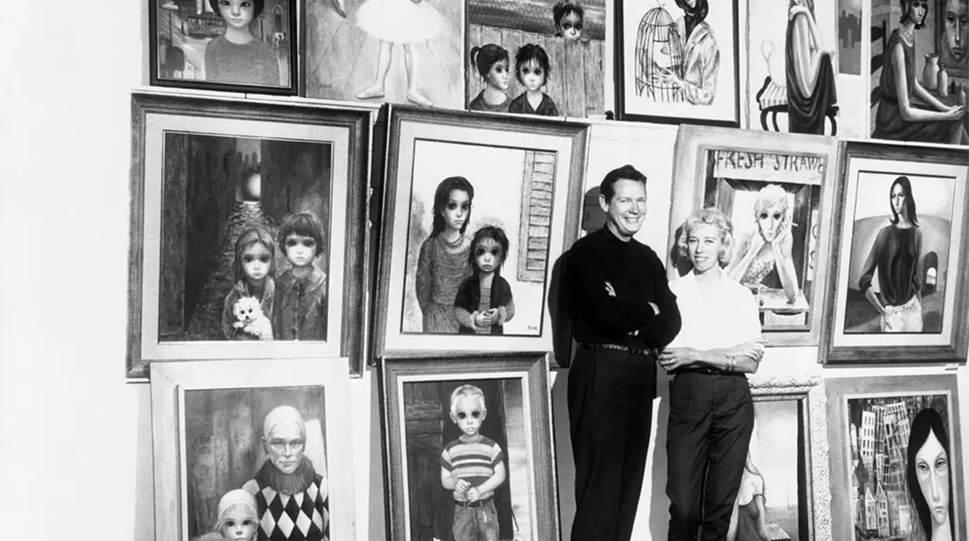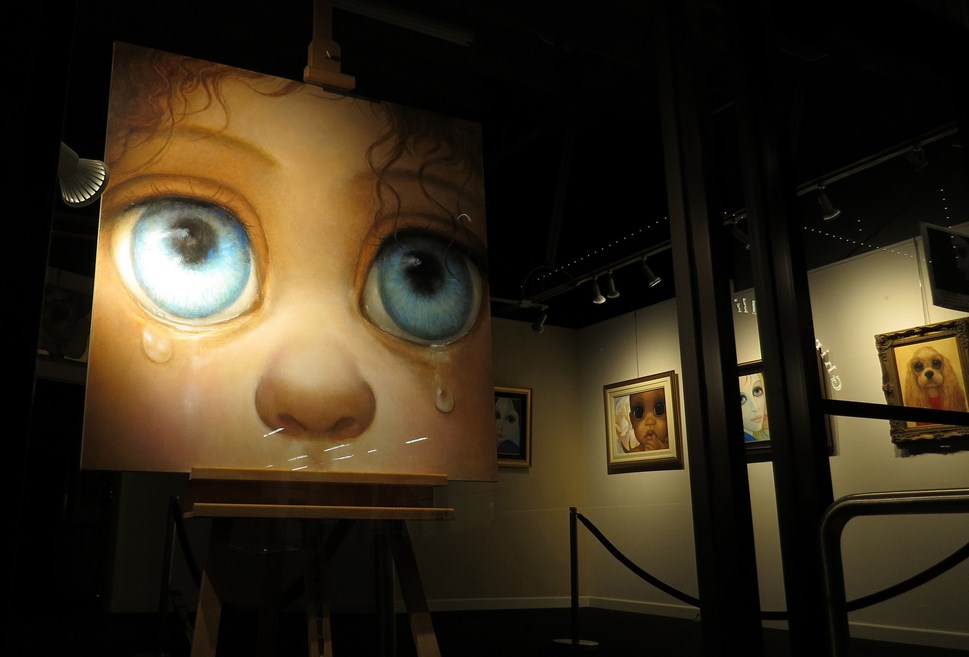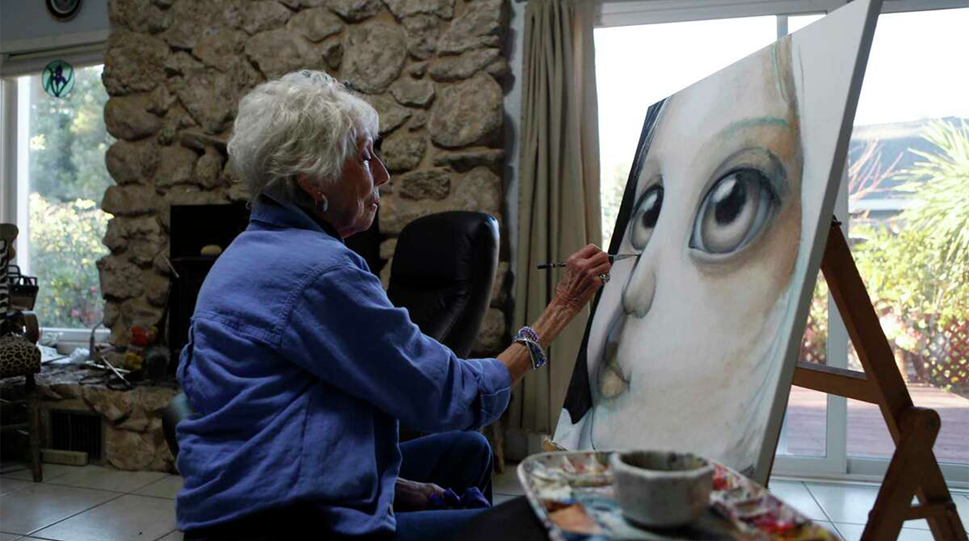In Memory of Margaret Keane, the Creator of Big Eyes
03 Jul 2022Margaret Keane died last week at the age of 94. Newspapers and news agencies ran headlines saying the creator of big eyes died, but I believe it is not fair to narrate the story of her life such briefly. Keane was an invisible woman for many years; In her husband's shadow, she appeared as a beginner who credited Walter for the works she herself created. The first article published about her was explicit and cruel – a series of big eyes dedicated to my dear husband. But how optimistically can we believe this reality?

The Keanes in 1960 | Credit: Bettmann | Contributor | Source: www.nytimes.com
New York Times even judged Margaret to be Walter's partner in crime. Keane remained silent for two decades. In interviews, she nodded, admitting that Walter had created the works. It meant as if she was saying: I have already told you that I am a spiritual and secluded person, and I prefer working in the basement of my house. Walter Keane won the awards, socialized with stars, and sold the big eyes of her wife at high prices to charities. Paintings of children with such big eyes appearing just as cute and lovely as a kitten would convince people to donate more money to charity. Initially, it was just a strategic agreement between Margaret and Walter. The 1950s was a challenging period for a woman painter in America, and Walter was a good seller. He was previously a property dealer. He had a great talent in economics and had mastered building up networks. He persistently followed night gatherings and was focused on selling.
Margaret admitted later that she was better off staying at home since she was shy and easily frightened. Before Walter, she lived with a man who turned out to be a harasser, so that she couldn't take another risk. Walter was the first person to notice Margaret's art. Still, as Gayatri Chakravorty Spivak, the art and literature critic has claimed, the upper class never lets the subaltern remain in the position of speaking. So the relationship between Walter and Margaret, which was based on an operating agreement, soon turned into a war over power.

Margaret Keane at work in her home studio in 1965 | Credit: Photo by Bill Ray | The LIFE Picture Collection | Getty Images
In her famous book "Can the Subaltern Speak?", Spivak writes that in the post-colonial era, the upper class, that is the power, or let's assume the Western intellect, looks at the margin of the society where groups with lower power exist, and it tries to speak on behalf of them. In the beginning, it has good intentions, it aims to bring a marginalized story to the center, but the reality is that, in nature, there is an inherent incoherence between the Western intellect and the oppressed. Therefore, the attempt to speak on behalf of the subaltern is condemned to failure and will eventually cause the Western intellect to end up looking at the subaltern's experience through their own experience and viewpoint. There is nothing wrong if a white man talks about a white woman, but it should be emphasized that a white man does not, and will not, represent a white woman, an Asian woman, or a black man. This process, which heads toward failure, will finally cause the subaltern's voice to be suppressed or, as Spivak has said, the subaltern cannot speak. Moreover, a concern not based on lived experience will appear hallow and absurd; this was the case with Walter. During the last years before separation, critics bombarded Walter with questions and asked him to explain his works and why he drew such big eyes? Why are they sad? Walter had hidden behind the idea that the work must speak for itself. Many judged the "Eyes" series to be absurd and devoid of any expression and that it was only suitable for television advertisements.

Source: www.theculturetrip.com
Two decades of silence, remaining in the shadow and imagining the joy of owning what you created with your own hands, can impose a deep and severe trauma. Margaret got divorced and secretly escaped the state with her daughter. Later, in an interview, Margaret confessed that she was the one who drew the eyes and not Walter. Soon an argument broke out, and one of the most famous judiciary cases was brought to court. The judge asked both Margaret and Walter to draw an eye just like the prominent big eyes we expect to see. Margaret did it in less than half an hour, and Walter made up an excuse about his hand's pain. Walter lost the case but never admitted to his loss. Margaret now dared to confess that she and her daughter were threatened and in danger for many years. Walter wanted all the credit, so he had to ensure Margaret would remain silent. Newspapers went the extra mile to cover the case, and Margaret's eyes later became the subject of a movie in Hollywood. The New York Times wrote that the power hierarchy in the American family was more complicated than they thought it was. Nonetheless, this is not just about the American family; although the New York Times didn't expect the American family – as the primary social unit in the white society of the United States – to work with the same mechanism of power in other countries, the reality was now revealed.
Margaret Keane's "eyes" narrate a personal story. She suffered a hearing loss since childhood, so she used to look at people's eyes to communicate with them. The paintings were no longer considered absurd, and the subaltern had now owned their art. But let's imagine where would Margaret's art have resided now after her death if her life story had gone a different path?
Source:
- www.nytimes.com/2022/06/28/arts/margaret-keane-dead.html
- www.nytimes.com/2014/12/25/movies/big-eyes-casts-another-side-of-keane-art.html
- www.artnews.com/art-news/news/margaret-keane-big-eyes-painter-dies-1234633039
- theculturetrip.com/north-america/usa/california/articles/margaret-keane-paintings-and-the-story-of-deceit-behind-them
- medium.com/compass-rose/dro-big-eyes-margaret-keane-and-spivak-representation-9378fd20fc0
Poster and slider image:
- Painter Margaret Keane, creator of the famous Big Eye paintings of waifs originally credited to her late former husband, Walter, and the sub






